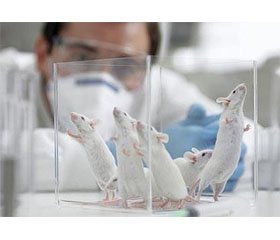The article was published on p. 63
Background. In recent years diseases of the musculoskeletal system are among the leading pathologies and problems of modern medicine. Undifferentiated connective tissue dysplasia (UCTD) holds a special position among them. Previous researches showed that intrafetal antigen injection can be used for modeling this condition. The meniscus of the knee joint of rats is a structure of interest in terms of reactivity to the modeled condition, because it is of great importance for the knee joint, preventing damage and degenerative processes including osteoarthritis.
Objective. To study the features of the menisci thickness dynamics in the knee joint of rats in norm and after the intrafetal antigen injection.
Materials and methods. 160 white laboratory rats from the 1st till the 90th day of life were studied. The first group included 60 intact rats. 60 rats of the second group underwent transuterine, transmembranous, intrafetal injection of liquid purified staphylococcal anatoxin (10–14 binding units in 1 ml, 10-fold diluted, 0.05 ml) on the 18th day of prenatal period according to the method of M.A. Voloshyn (1981). 40 rats of the third group after injection of saline solution served as control. The progeny was born on the 22nd–24th day of prenatal period. Euthanasia was performed on the 1st, 5th, 7th, 11th, 14th, 21st, 30th, 45th, 60th and 90th days after birth. When working with experimental animals we were guided by the «European Convention for the protection of vertebrate animals…» (Strasbourg, 18.03.86) and the Law of Ukraine «About protection of animals from cruel treatment» (№ 3447-IV). For the research left knee joint was taken, fixed in 10 % neutral formalin. Decalcification was carried out using Trilon B, dehydration — in ethanol of rising concentration. Paraffin sections were made and stained with hematoxylin and eosin. Thickness of medial meniscus (MM) and lateral meniscus (LM) in the peripheral portion was measured using ocular-micrometer. The obtained data were processed using methods of variation statistics. Results were considered significant at p ≤ 0.05. The differences between the averages were evaluated using Student’s t-test.
Results. On the 1st day both medial and lateral menisci are thicker in the experimental group in the peripheral zone as compared to intact rats (MM: 184.23 ± 16.70 µm in intact group and 240.28 ± 7.78 µm in experimental group; LM: 241.27 ± 24.69 µm and 362.85 ± 10.10 µm, respectively). On the 5th day of life this regularity persists and there is a slight meniscus thickening in the intact group along with significant one in experimental rats (MM: 196.00 ± 6.26 µm and 359.98 ± 13.17 µm; LM: 261.37 ± 0.89 and 362.48 ± 30.12 µm, respectively). Considerable thickening of the meniscus in the animals of intact group starts from the 7th day, while in antigen-injected group statistically significant decrease of thickness is observed in the lateral meniscus (399.44 ± 26.94 µm in norm and 269.50 ± 3.38 µm in experiment). Between 11th and 21st days analyzed indicator is less in the experiment as compared to the intact group. On the 21st day in the group of rats subjected to intrafetal injection of staphylococcal anatoxin rapid growth of the studied parameters occurs, they become significantly higher than those in norm (MM: 407.44 ± 27.55 µm in intact rats and 518.80 ± 39.99 µm in experiment; LM: 400.79 ± 25.83 µm and 506.00 ± 23.38 µm, respectively).
On the 30th day studied parameters are almost equalized in both groups. Subsequently, from the 45th till the 90th day of postnatal life there is a gradual increase in the thickness indicators of the meniscus in intact group rats. Against this background, there is retard of these indicators in antigen-injected animals statistically significant for the 45th day — MM: 539.0 ± 6,76 µm and 462.83 ± 33.22 µm, LM 450.00 ± 46.75 and 318.00 ± 13.54 µm; 60th day — MM: 606.67 ± 21.08 µm and 450.33 ± 25.09 µm; 90th day — LM: 595.87 ± 33.31 µm and 441.09 ± 29.63 µm.
Conclusions. It has been established that the intrafetal antigen injection results in the change of rates and terms of the morphogenesis of the knee joint menisci in rats, which manifests in their peripheral portion thickening as compared to intact group during the first and the third weeks of postnatal life and thinning during the second and third months. This can be considered the expression of UCTD syndrome and become the basis for subsequent disorders of joints including osteoarthritis.

